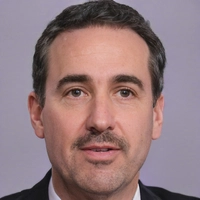
Someone pays over a lakh for a digital marketing course, another signs up for one that costs less than a Netflix subscription. It’s wild. The price tag on digital marketing education just might surprise you more than what you spent on your last smartphone. If you’ve been scrolling through course ads this week, you probably noticed confusing ranges, shiny promises, and schools throwing around ‘100% job guarantee’ banners like confetti. So, why does something you can learn for free on YouTube sometimes cost as much as a used car? Well, let’s break down exactly what you get for your bucks, what numbers to expect for 2025, and how to spot real value in this crowded market.
Why Do Digital Marketing Courses Cost So Much (or So Little)?
Pricing for digital marketing courses is like the buffet at a five-star hotel: the choices and quality vary a lot. There’s no fixed price because providers serve different things on the plate. A short-term, self-paced online course could cost as little as ₹499 ($6), while a six-month, instructor-led, industry-certified program may set you back ₹1.2 lakh ($1,400) or more. What’s going on here? It comes down to five big things: content depth, instructor reputation, certification value, support and networking opportunities, and, of course, the brand you’re buying from.
Take a look at actual course fee ranges in 2025:
| Type | Typical Duration | Fee Range (INR) | Fee Range (USD) |
|---|---|---|---|
| Self-paced Online | 4-8 weeks | ₹499 - ₹8,000 | $6 - $96 |
| Live Online Bootcamp | 3-6 months | ₹28,000 - ₹85,000 | $335 - $1,015 |
| University Diploma/PG Program | 6-12 months | ₹72,000 - ₹2,40,000 | $860 - $2,900 |
| Corporate Training | Custom | ₹1,00,000+ | $1,200+ |
If you hop on Coursera or Udemy, you’ll spot entry-level options for less than ₹1,500 ($18) during sales. On the other hand, something like the Indian School of Business’ Advanced Digital Marketing program runs over ₹1.2 lakh, reflecting the brand’s value, expert professors, career help, and often, a respected certification. Let’s not pretend the same holds for a two-hour YouTube binge—a free option, yes, but not the same as what you get with a structured, industry-backed curriculum.
Why such big gaps? Some platforms use a pre-recorded video model—they scale better, so costs drop. Premium programs add real mentorship, job referrals, and longer projects. The most expensive ones often include exclusive industry talks, personalized feedback, and a strong alumni network. Naive as it sounds, people really do pay extra for names that pop up on LinkedIn: think upGrad, MICA, or Simplilearn.
What’s Actually Included in a Digital Marketing Course?
This bit’s easy to overlook if you’re just chasing percentages and star ratings. Fact: not all digital marketing courses teach the same stuff, and what’s included changes how much you’ll pay. Ever heard someone say, “I finished a course, but I can’t actually run ads?” That’s what you avoid by checking the course breakdown. Most top-notch programs now offer these modules:
- SEO (including analytics and site audits)
- Google and Facebook ads (PPC/SEM)
- Social media planning (organic + paid)
- Email marketing strategy and automation
- Content creation and marketing funnels
- Analytics tools (GA4, Search Console, HubSpot basics)
- Influencer & affiliate marketing
- Marketing automation tools
Bigger courses offer hands-on labs or case studies with real businesses. Some will even make you build and run campaigns—using at least ₹5,000 in actual ad spend—so you’re not just writing theory. Job-hunting support can be part of the deal or an extra charge (₹8,000–₹25,000) for résumé help, mock interviews, and placement calls.
Certifications are important to some recruiters. Google, Meta, and HubSpot all offer their own exams, sometimes bundled as freebies in premium courses. If you want a university-endorsed diploma, be prepared to fork out more—those certificates cost real money to print and recognize. On the flip side, most short courses throw in a completion badge, but hiring managers usually care about your project work, not your PDFs.

Are Expensive Courses Actually Worth It?
This is the million-dollar question. If you’re thinking, “Skip the cash, grab the free stuff,” that’s not wrong—at least, not for basics. YouTube channels like Neil Patel and Moz still lead the pack for honest beginners, and Google’s Skillshop is absolutely free. But once you need depth—actual client case studies, tough feedback, or a job referral—paid courses win every time.
There’s growing talk in 2025 about batch-mentored “hybrid” digital marketing schools, where 80% is online and 20% is live, with peer feedback and group work. They’re more expensive (₹55,000–₹80,000), but the job placement rates are strong. For example, upGrad claims 60% of its advanced track students land interviews within two months of finishing. Does everyone get a high-paying job? No. But credible institutes share real placement stats and highlight which modules recruiters truly care about—SEO, analytics, ad platforms, and strategy design top that list.
Where does the extra money go with high-end courses? Into mentor salaries, paid tools (think SEMrush, Ahrefs, Canva Pro), and case competitions. When I looked at the programs that helped friends like Rahul land jobs at agencies, they always had an internship comp built-in. No, you don’t have to pay this much—if you’re self-driven, stack a few affordable topic-based courses (like advanced SEO from SEMrush Academy or content strategy from Copyblogger) and invest your money in actually running campaigns. That’ll teach you more than a fat textbook ever will.
How Can You Save on Digital Marketing Course Fees?
Sure, you can blow your bonus on a one-year program, but you don't have to. First thing you should know: never pay rack rate on the big online learning sites. Wait for sales—they’re not rare. Udemy, for instance, lists many courses at ₹3,499, but almost every month you’ll see the same one for ₹499. Even the universities run scholarships—if you hunt for early-bird offers or local industry tie-ups, you could save 20%–40% off their posted fees.
My wife, Nalini, got her certification for less by forming a group with colleagues and applying for a bulk discount. This tip works with many Indian providers—ask for group rates or refer-a-friend deals. If you’re already working, see if your company will sponsor upskilling. Plenty of major IT and e-commerce firms will cover the entire fee for a course if you show how it fits your job goals.
Another big money-saver: try open courses with strong community forums. Google Digital Garage, Meta Blueprint, and HubSpot Academy offer valuable, recognized micro-credentials for free. These won’t get you a university parchment, but many recruiters care more about your work sample than your syllabus printout. Stack these up, then use LinkedIn to show off your campaigns, and suddenly you’re not just another certificate-chaser.
Here’s a tactic most people ignore: contest scholarships. Whether it’s LinkedIn Learning or local institutes like Digital Vidya, they occasionally sponsor full-tuition spots for social media contests, hackathons, or writing challenges. Spending a couple of hours crafting a pitch can score you a ₹50,000 program for nothing. That’s a better win than hitting the lottery.

How to Choose the Right Course for Your Budget and Career
Don’t just pick what your friend recommends. The most expensive or popular one doesn’t mean it’s perfect for your needs. List what you want: Is it a fancy certificate? Job assistance? Or just hardcore skills?
- Compare modules, not just price—look for syllabus depth.
- Search for reviews on Quora, Reddit, and alumni testimonials. Don’t fall for paid reviews.
- Check if instructors have industry experience—if they can’t show a LinkedIn profile with real campaigns, move on.
- Find out if they offer hands-on projects or internships—these are worth more than a hundred quizzes.
- If you want a recognized credential, make sure the institution is listed with companies in the Naukri Monster Glassdoor survey for employability.
Don’t believe the ‘cheap=fake, expensive=best’ myth. I’ve seen people get jobs after 8-week Udemy “crash courses” because they networked and built good portfolios. Others spent ₹2 lakh on famous courses and still struggled because they skipped assignments and didn’t update their LinkedIn profile.
And here’s a wild fact: according to a 2024 LinkedIn India survey, 75% of digital marketing job calls asked for a strong portfolio link, not outright certificates. So if you’re weighing course fees, remember: your ROI depends on what you build, not just what you buy.
The game is about showing up with the right mix of practical chops and a story recruiters want to hear. You don’t have to break the bank to get there. Pick smart, hustle hard, and you’ll find that sweet spot—without needing to max out your credit card.
